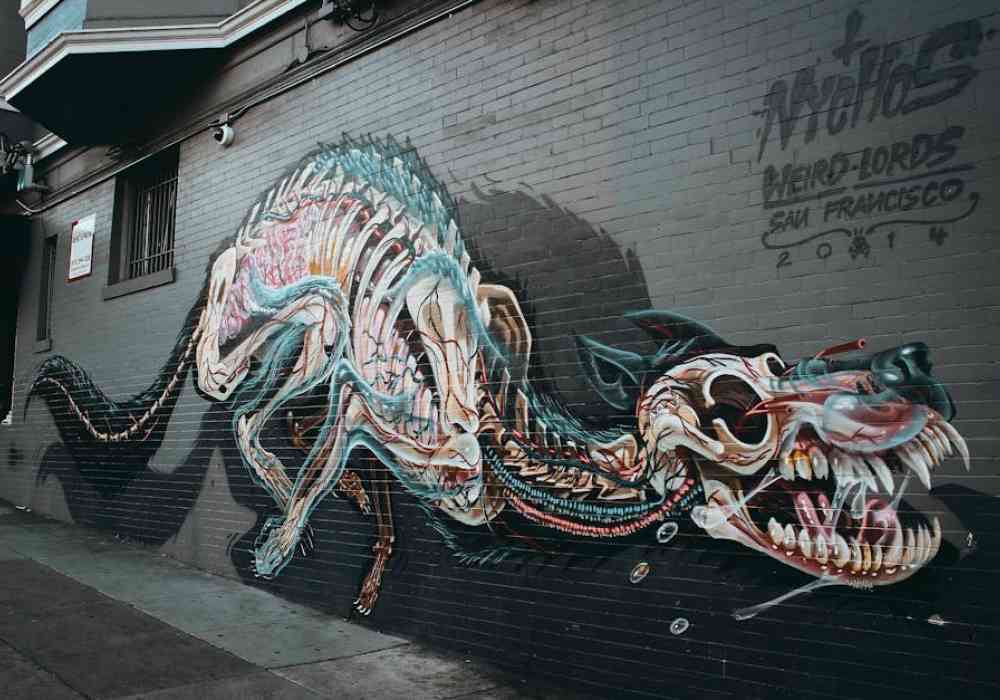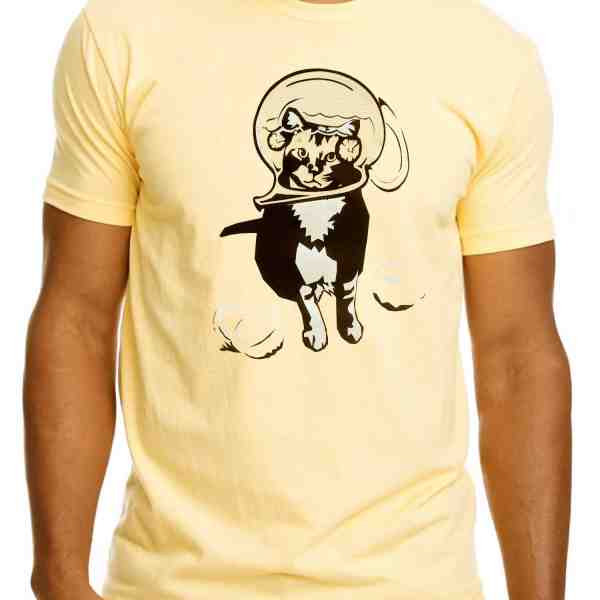Graffiti vs Street Art: What’s the Real Deal?
Street art graffiti: our urban landscape wouldn’t look the same without it. From humble beginnings on New York’s subway trains in the 1970s, this bold art form has evolved into a global phenomenon. Today, street art graffiti comprises both the gritty rebellion of graffiti tags and the vibrant murals of street artists, each offering unique cultural insights.
Quick Summary:
- Origins: Began in 1970s New York as a visual counterculture with graffiti on trains.
- Evolution: Gained recognition with artists like Jean-Michel Basquiat and Keith Haring.
- Public Perception: Divisive; seen as both vandalism and beautification.
The public’s view on street art graffiti has transformed over time. Once seen as mere vandalism, it’s now celebrated as street art with economic and cultural value. Yet, tensions remain, especially in how each art form is perceived. Graffiti often clings to its countercultural roots, while street art is increasingly welcomed and even commissioned.
I’m Chris Higgins, the creative force behind Handshucked Art and Designs. With years of experience in graphic design and a deep-seated passion for street art graffiti, I’ve dedicated my work to showcasing the vibrant interaction between these two powerful art forms. Join me as we explore their origins, evolution, and how they color our cities today.
Understanding Street Art Graffiti
The Origins
Street art graffiti traces its roots back to the busy streets of 1970s New York. This era marked the birth of graffiti as we know it today. Young artists began using spray paint to express themselves on the walls of buildings and, most notably, on subway trains. These early pieces were often simple tags—stylized signatures that announced the artist’s presence in the urban landscape.
The movement quickly gained momentum, fueled by a desire for visibility and a need to challenge societal norms. It was a time when artists like Jean-Michel Basquiat and Keith Haring began to blur the lines between graffiti and traditional art, bringing street art into the public eye and eventually into galleries.
Key Differences
While street art and graffiti are related, they have distinct characteristics that set them apart. Here are some of the key differences:
- Naming and Intent: Graffiti often centers around the artist’s tag or moniker, serving as a personal signature or mark of territory. In contrast, street art encompasses a broader range of visual art forms, from murals to 3D installations, often with a focus on conveying messages or themes to the public.
- Materials and Techniques: Graffiti primarily involves spray paint and markers, with artists favoring quick, bold strokes to make their mark. Street art, however, employs a wider array of materials and techniques, including stencils, wheat-pasting, and even digital projections. This diversity allows street artists to create more complex and varied works.
- Legality and Acceptance: Graffiti typically operates in a legal gray area, often considered vandalism due to its unauthorized nature on public surfaces. On the other hand, street art is increasingly recognized as a legitimate form of public art, with many works being commissioned or sanctioned by city officials or private entities. This acceptance has allowed street art to flourish in urban environments worldwide.
These differences highlight the unique roles that street art graffiti plays in our cities. While graffiti maintains its rebellious spirit, street art often seeks to engage and inspire the public, bridging the gap between urban art and the communities it inhabits.
The Similarities Between Graffiti and Street Art
Shared Mediums
Both graffiti and street art thrive in urban environments, using city walls as their canvas. Spray paint is a common tool for both art forms, valued for its speed, versatility, and vibrant colors. This shared medium allows artists to create eye-catching works that transform everyday public spaces into open-air galleries.
While graffiti artists often focus on lettering and tags, street artists explore a wider range of visuals. However, both forms share a commitment to using the city as their stage, making art accessible to everyone who passes by.
Political and Social Commentary
Street art graffiti is more than just visuals; it’s a powerful platform for political and social commentary. Both graffiti and street art frequently address pressing social issues, providing a voice for those who may feel marginalized or unheard.
Activism is at the heart of many pieces, with artists using their work to challenge authority, question societal norms, and push for change. This can be seen in the bold works of artists like Banksy, who uses his art to deliver uncensored messages that provoke thought and inspire action.
The ability to communicate directly with the public allows both graffiti and street art to serve as tools for activism. They encourage viewers to engage with their surroundings and consider the deeper meanings behind the images they encounter. Whether it’s a simple tag or a complex mural, these art forms continue to play a vital role in urban life, offering commentary on the world we live in.
The Legality Debate
Graffiti as Vandalism
Graffiti often walks the line between art and vandalism. When we think of graffiti, images of unauthorized tags and colorful designs on public surfaces come to mind. This is because graffiti artists typically operate without permission, using city walls as their canvas in a covert manner. The goal? Not to get caught. This stealthy approach is part of the graffiti culture, where artists express themselves in the urban landscape without seeking approval.
The unauthorized nature of graffiti is what leads many to label it as vandalism. It’s seen as a disruption to the public order, a defacement of property that must be cleaned up or painted over. This viewpoint is common in cities worldwide, where graffiti is often associated with crime and disorder.
Yet, despite its controversial status, graffiti remains a powerful form of expression. It challenges the boundaries of art and questions who gets to decide what is acceptable in public spaces.
Street Art as Commissioned Work
On the flip side, street art is often seen as a legitimate and welcomed form of public art. Unlike graffiti, street artists frequently seek permission before creating their pieces. They may work with property owners or participate in street art festivals, where murals are commissioned and celebrated.
These murals transform blank walls into vibrant artworks that improve the urban environment. Street art is not just tolerated; it is often acceptd by communities for its ability to beautify neighborhoods and attract visitors. This public visibility lifts street art above the label of vandalism, giving it a place in the art world as a respected form of creativity.
Moreover, street art’s commissioned nature allows artists to explore complex themes and create detailed scenes that can engage and educate the public. This form of art becomes a bridge between the artist and the audience, offering a shared experience that is both visual and thought-provoking.
In summary, the legality of street art graffiti hinges on permission. While graffiti is often unauthorized and labeled as vandalism, street art thrives on its commissioned status, bringing color and conversation to public spaces. These distinctions highlight the ongoing debate about what constitutes art versus vandalism in our urban landscapes.
Frequently Asked Questions about Street Art Graffiti
What is street art in graffiti?
Street art in graffiti refers to the creative expressions found in public spaces, often blending elements of both graffiti and street art. While graffiti typically involves writing or drawing on surfaces without permission, street art is more about visual art forms like murals or installations that are often welcomed or commissioned.
Street art in graffiti can include everything from elaborate murals to smaller, thought-provoking pieces that use the urban environment as a canvas. It transcends the traditional boundaries of graffiti by incorporating different styles and mediums, offering a more accessible and sometimes more socially accepted form of public art.
Is graffiti street art or vandalism?
The distinction between graffiti and street art often lies in the intent and permission behind the work. Graffiti is frequently viewed as vandalism because it is created without authorization, focusing on tagging and marking surfaces. This unauthorized aspect is what typically earns graffiti its controversial reputation.
On the other hand, street art is generally seen as a legitimate form of public art. It often involves collaboration with property owners or participation in art projects, resulting in commissioned pieces that beautify and add value to urban spaces. However, the lines can blur, as some graffiti artists transition into street art, gaining recognition and acceptance in the art world.
How are graffiti and street art similar?
Despite their differences, graffiti and street art share several similarities. Both art forms use public spaces as their canvas, making them accessible to everyone. They often employ similar materials, like spray paint, and can coexist in the same locations, sometimes even overlapping.
Both graffiti and street art serve as powerful tools for political and social commentary. Artists use these mediums to express uncensored messages, challenge societal norms, and engage with the community. Whether through a rebellious tag or a commissioned mural, these art forms reflect the dynamic interplay between art and the urban environment, highlighting the voice of the streets.
Conclusion
At Handshucked Designs, we celebrate the vibrant world of street art graffiti and its impact on cultural trends and public art. Our roots in Key West, Florida, inspire us to blend the rebellious spirit of graffiti with the visual allure of street art, creating unique pieces that resonate with both locals and visitors alike.
Cultural Trends
Street art graffiti has become a significant cultural trend, shaping the aesthetics of urban landscapes worldwide. In cities like New York, London, and Berlin, these art forms have evolved from their underground origins to become mainstream attractions. They not only beautify neighborhoods but also stimulate local economies by drawing tourists and fostering a sense of community identity.
Public Art
Public art, including street art and graffiti, plays a crucial role in changing urban spaces. It challenges the traditional boundaries of art by bringing creativity out of galleries and into the streets, making it accessible to everyone. This democratization of art encourages public engagement and dialogue, offering a platform for artists to convey powerful messages and provoke thought.
At Handshucked Designs, we accept these cultural movements by offering original art and hand-printed apparel that reflect the essence of street art graffiti. Our distinctive series, like “Lost Cat” and “Hungry Manatee,” capture the playful yet profound nature of this art form, echoing the spirit of the streets.
Explore our creations and join us in celebrating the dynamic world of street art graffiti. Visit our Handshucked Designs website to find more about our unique offerings and how we contribute to the changing landscape of public art.






